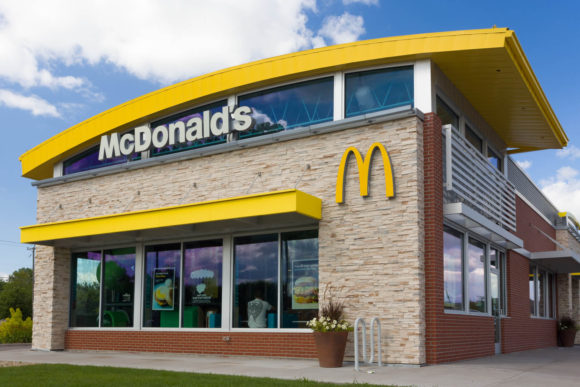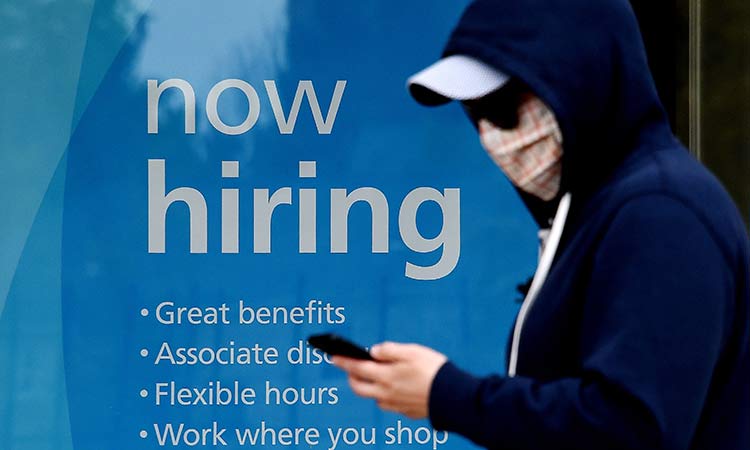By Andrew G. Simpson | September 2, 2020

Municipalities, their insurers and risk pools should be heeding the current public re-examination of police and prosecutorial actions taking place across the country, according to an insurance policyholder attorney who works on civil rights cases.
Attorney Alexander Brown sees the Black Lives Matter movement, actions by reform-minded prosecutors, increasing legal actions and calls for police reform resulting in more municipalities having to answer for law enforcement errors and misconduct.
This, in turn, will mean closer scrutiny of law enforcement liability insurance policies by those seeking damages for victims of civil rights violations, according to Brown.
However, while today insurers may be changing their policies, the cases being brought tend to go back awhile and thus involve policies issued years and even decades ago.
Brown, who is with the firm of Lathrop GPM in its Kansas City office, is an insurance coverage specialist who represents policyholders including municipalities facing civil rights complaints from victims of wrongful conviction and incarceration.
Recent Settlements Involving Law Enforcement
A Nebraska county that owes $28.1 million to six people wrongfully convicted of murder reached a settlement with several insurance companies to help pay part of the judgment.
Wrongfully Convicted Missouri Man Gets $8M Settlement
A southeastern Missouri city has agreed to an $8 million settlement in a lawsuit filed by a man who spent 17 years in prison for murder before the state Supreme Court overturned his conviction. The city will pay about $75,000 of the settlement, with the rest coming from its insurance.
Missouri Sheriff’s Dept. Settles with Wrongfully Imprisoned Man for $2M
An eastern Missouri sheriff’s department has reached a $2 million settlement with a man who spent more than three years in prison for his wife’s killing before the conviction was overturned. An insurance company has agreed pay the money.
$3.5M Settlement Reached in Death of Black Man Shot 22 Times by West Virginia Police
A West Virginia city has agreed to settle an excessive force lawsuit filed by the family of a homeless Black man who was shot 22 times by police, an attorney said. The police department said the city’s insurance carrier agreed to the settlement.
Brown is a member of the Lathrop GPM Civil Rights Insurance Recovery Practice along with Mike Abram and Bill Beck. In a recent interview with Insurance Journal, Brown offered his legal and policyholder perspectives on civil rights claims and some insurance ramifications.
Not all persons that have been wronged by law enforcement or the civil justice system are in a position to pursue a liability case against the government. In fact, strong liability claims are relatively rare in part because of the qualified immunity doctrine for police officers and the absolute immunity doctrine that protects prosecutors while performing prosecutorial functions.
“I would say that a majority of people exonerated do not have strong liability claims because of these immunities. If qualified immunity is weakened for police officers, it follows that more liability claims will be brought,” Brown said.
Once exoneration is secured, the Lathrop GPM team moves to obtain compensation for the exonerees, who are disproportionately Black men. The settlements, which can sometimes be costly, are most likely to happen where there is insurance.
“[I]n these cases where you’re trying to come to a resolution outside of a verdict, the existence of insurance is critical. It’s the most critical part of the entire settlement process,” Brown acknowledges.
According to Brown, obtaining insurer-funded settlements helps avoid trials, which can be risky for both the public entities as well as the plaintiffs because either could lose big. State caps on liability do not apply in these federal civil rights suits and jury verdicts can be $1 million to $2 million per year. The insurance deals help alleviate situations where a public entity that has no insurance or inadequate coverage may be forced to raise taxes to cover settlements or have to declare bankruptcy.
The cases typically involve older insurance policies because the alleged violations stretch over long periods of time of 10, 20 or even 30 years. “The cases are treated and should be treated akin to long-tail liability claims for any kind of exposure to conditions, or illnesses, environmental contamination. It’s the same kind of thing, where you have a long period of time between the conviction and the exoneration,” he said.
“So really the only win-win scenario, if there is one in these cases, is to make sure that the insurance that they bought specifically for these type of situations covers them.”
“[I]n these cases where you’re trying to come to a resolution outside of a verdict, the existence of insurance is critical. It’s the most critical part of the entire settlement process.”
The insurance settlements also help those who are exonerated and then face being released back into society with little or nothing, especially in states without any compensation fund for wrongfully convicted persons. According to The Innocence Project that works to free wrongfully convicted persons using DNA evidence, the federal government and 35 states have provisions to provide some compensation for exonerees. However, advocates for the exonerees believe the amounts states provide (often $50,000 a year for each year of wrongful imprisonment) are inadequate for the injuries suffered.
What’s Changing
To hold a municipality liable for a civil rights violation, a plaintiff has to show the violation was due to a policy, practice or procedure of the municipality, or that a decision-maker like a sheriff was involved in it. Forces now at play are likely to aid plaintiffs in their causes, according to Brown.
“What I see now with the Black Lives Matter is that there’s going to be a whole lot of investigation into whether various municipalities or police entities have policies or practices that discriminate against African-Americans, and that’s going to be established with respect to numerous cities,” Brown said
“Once it is established that they do have a pattern and practice of locking away Black men or of beating Black men, then suing those cities and municipalities is going to be a lot easier. Because then they can point to a policy and practice, and so you can hold the city and the municipality liable along with the individual defendant or officer who committed the misconduct.”
Once a municipality gets hit with a verdict, not only is that verdict potentially crippling, but also it may signal the start of a pattern of practice for the next aggrieved person who sues.
Law Enforcement Liability Discussions
Police Liability Insurance in 2020, a Time of Civil Unrest
A discussion of municipal and law enforcement liability accountability.
Do Police Officers Need to Buy Professional Liability?
Insurance Journal Academy’s Patrick Wraight examines the idea of police officers buying their own insurance.
While it might behoove police departments and prosecutors to review their practices and patterns to see what has been going on, it’s not that easy.
“You might have a police officer saying, ‘Hey, let’s not look too deeply into this because we don’t want to create paper trails,'” Brown suggests.
Similarly, district attorneys may fear the legal and financial repercussions may lie ahead for the municipality if they start unearthing wrongful conduct by previous officeholders as they try to get innocent people out of jail, which a few reformist district attorneys across the country are trying to do. Brown is currently representing a prisoner in Missouri who is stuck in jail because of a dispute over a prosecutor’s authority to undo a previous prosecution.
“If you’ve got a progressive reformist DA who’s working, as they should, to get people out of prison who were in prison because of wrongful conduct of their past offices, they know at some level that there might be liability at the end of the rainbow when these guys get out,” Brown said. “It’s a brave thing to do and it’s a necessary thing to do. I think that it’s a good thing.”
Brown said that in addition to the current questioning of the current qualified immunity for police officers in light of several shootings of Black men, there has also been some shifting in case law that could limit prosecutors’ immunity if they commit misconduct while acting in a non-prosecutorial capacity, such as helping with the investigation or doing ministerial work.
“Then they do not have absolute immunity; they only have qualified immunity. So that immunity is slowly degrading, while what cops can get away with in terms of qualified immunity is also degrading. So you have situations where these lawsuits are going to be a serious focus and a serious concern for municipalities and public entities across the country,” he stressed.
Landmark Ruling
The 2010 movie Conviction starring Hilary Swank tells the story of how a determined sister secured her brother’s exoneration and release from prison after he served more than 18 years for a murder he did not commit. The movie ends with Kenneth Waters’ release and reunion with his daughter in 2001 but the real story — including the insurance effects — did not end there.
“So you have situations where these lawsuits are going to be a serious focus and a serious concern for municipalities and public entities across the country.”
What followed his release from prison were years of legal proceedings and negotiations with insurers to obtain compensation for Waters for the years of mental and physical injuries he suffered while in prison, as well as for his loss of freedom. Eight years after his release, in 2019, Waters’ estate eventually settled a wrongful conviction lawsuit against the town of Ayer, Mass. Five of the town’s six insurers paid $3.4 million to the plaintiff’s estate (Waters himself died in 2001 in an accident only six months after getting out of jail).
However, a sixth insurer, Western World, argued that it was not obligated to defend the town under any of the six consecutive law enforcement officers’ liability policies it issued from 1985 to 1991, and it did not participate in that settlement. But four years later in a follow-up proceeding, a court found that Western World had breached its duty to defend and that its policies did apply. The court awarded $1,000 per day that Waters had been incarcerated ($6.7 million), another $1 million “for physical illnesses and injuries incurred during and because of his incarceration” and another $3 million for “mental anguish, pain and suffering,” for a total of $10.729 million against Western World.
Brown says the Ayer decision was significant for holding that insurance policies with unique language can be held accountable for acts during the tenure of a wrongful incarceration and not just at the time of a wrongful conviction.
“The Waters case was the first decision to recognize that certain insurance policies issued in post-conviction years might apply to wrongful imprisonment cases,” Brown said.
The Waters case was handled by Brown’s mentor, Bill Beck, of the firm’s civil rights division. It was Brown’s introduction to this field of insurance law.
Beyond Hollywood
The Waters case that garnered the attention of Hollywood was important. The ruling has helped get more insurers to come to the table and participate in settlements, according to Brown.
Even more important is a case decided in May 2019 in which Brown and his firm were involved.
Travelers Indemnity Co. v. Ethel Mitchell involved whether multiple insurance carriers had a duty to defend their insured, Mississippi’s Forrest County, which was sued by the estates of three wrongfully convicted men. The insurers had issued more than a dozen specialty law enforcement liability policies between 1979 and 2010 (the year of the exonerations).
“The Travelers v. Mitchell case is our firm’s most important civil rights case to date,” Brown said.
From 2013 to 2019, Brown and his colleagues fought for compensation for the families of three men in Mississippi who were wrongfully convicted in 1979 and spent a collective 83 years in prison for a rape and murder they did not commit. The men ultimately died from the injuries they sustained in prison.
Brown and his colleagues successfully litigated the underlying rights matter against multiple carriers that resulted a $20.5 million insurer-funded settlement for the families of the three men. The insurers appealed. On May 29, 2019, the U.S. Court of Appeals for the Fifth Circuit, in a unanimous panel decision, upheld the lower court rulings in the case.
According to Lathrop GPM’s reading, the Fifth Circuit judges ruled that insurers cannot utilize common law “coverage theories” such as “first manifestation” or “first exposure” or “continuous trigger” to sidestep the plain language of their policies.
In Brown’s words, “This groundbreaking and precedent-setting decision rejected a so-called ‘single trigger’ theory advanced by the insurance lobby in favor of a plain language reading of the insurance policies, ultimately holding multiple insurers liable for bodily injuries sustained by our clients while imprisoned.”
The result was a victory not only for the families of three men but also for the county, police officers and thousands of future exonerees seeking financial compensation for their wrongful imprisonment, according to Brown.
“This is definitely a case that municipalities need to be aware of,” said Brown, noting that it has since been adopted and expanded in opinions in Missouri (Ferguson v. St. Paul Fire & Marine Ins. Co.) and Kentucky (St. Paul v. City of Newport Ky.).
(The law firm also said it thinks the Travelers case may have even more widespread implications. “While the win immediately benefits the families of wrongfully convicted men, the implications will help business clients vindicate their rights to insurance proceeds to cover liabilities for other ‘long-tail claims’ including asbestos exposure cases,” the firm said in announcing the ruling.)
“It’s a good feeling to help compensate those who have been destroyed by society as well as protecting the current cities or entities.”
Brown joined the Lathrop GPM firm in 2013, right after Western World settled in that landmark Waters case. It was a move that he says changed his life.
“I never thought as an insurance coverage lawyer that I’d be looking at crime scene photos all day long, but it’s exciting. It’s a good feeling to help compensate those who have been destroyed by society as well as protecting the current cities or entities,” Brown told Insurance Journal.
Brown and other Lathrop GPM attorneys work pro bono with attorneys from the civil rights litigation firm Neufeld, Scheck & Brustin and The Innocence Project, which Neufeld and Scheck founded in 1992 to use DNA evidence to get innocent people out of jail. The Innocence Project receives thousands of requests for help a year. To date, 375 people in the U.S. have been exonerated by DNA testing, including 21 who served time on death row. These people served an average of 14 years in prison before exoneration and released.
Overall Lathrop GPM has been involved with more than 15 settlements totaling almost $200 million. Most recent was the case of Craig Coley, 71, who served four decades in prison for a murder that DNA proved he did not commit. The city of Simi Valley, Calif., and its insurers reached a $21 million settlement with Coley. The victories also include getting $25 million for an upstate New York man who in 1991 at age 16 was wrongly convicted and jailed by Putnam County for a rape that in 2006 DNA proved he did not do.
Brown is now working with the legal team representing Lamar Johnson, who remains in a prison for the 25th year in Missouri even though there is evidence he is innocent. He has not been released or given a new trial because of a dispute over whether a current prosecutor — in this case St. Louis Circuit Attorney Kimberly M. Gardner — has the power to try to correct what she believes are wrongful convictions in decades-old cases.



.jpg?width=600)













